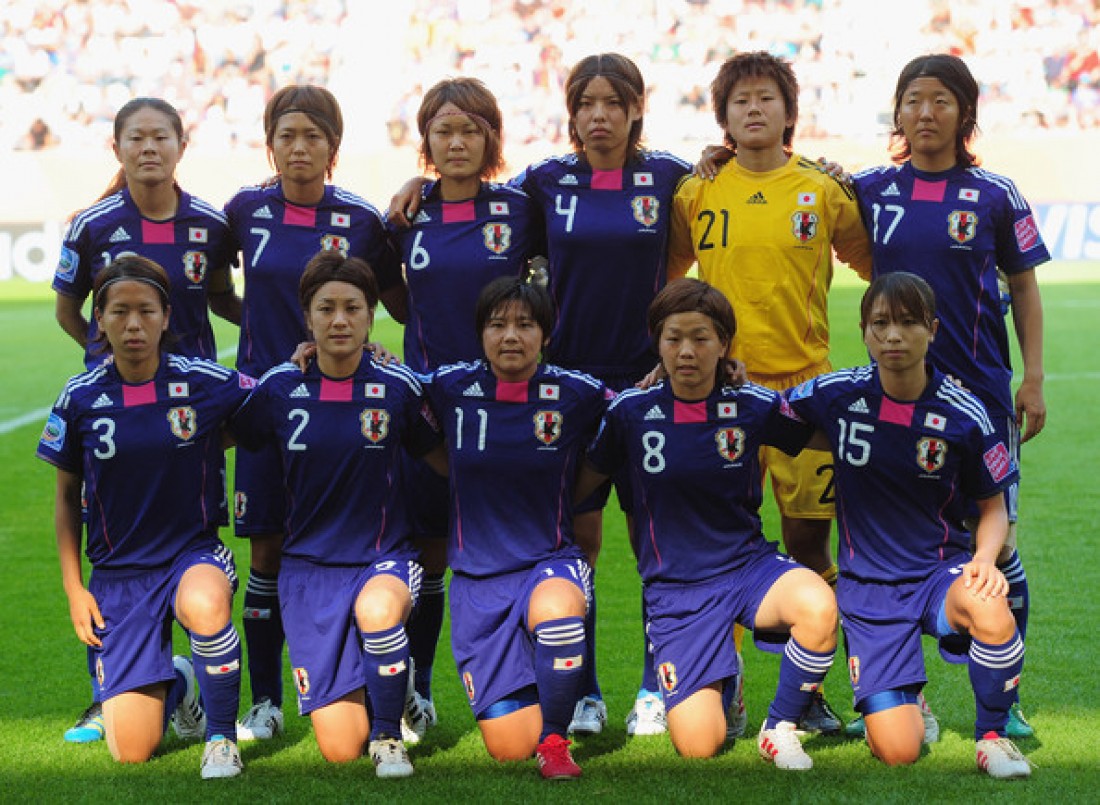Because this is a Women’s World Cup year, I have decided to countdown to the tournament by providing a short soccer/fitness related preview of each of the 24 participating nations. In this instalment, I will look at Japan, the reigning Women’s World Cup Champions from Germany 2011. Japan have been drawn in Group C, along with Switzerland, Cameroon and Ecuador. They will play their first match against Switzerland on Monday, June 8th, 2015.
Japan were somewhat surprise winners of the tournament in 2011, as they had previously never advanced farther than the quarter-finals in a World Cup. Anyone who watched Japan in the 2011 tournament, however, would not have been very surprised that they won it. The team featured (and still does feature) an efficient, technical short passing game, and also displays excellent teamwork throughout the side. The Japanese team will now have to deal with the pressure of being one of the favourites in Canada in 2015.
In order to grow the women’s game in their country, the Japansese FA recently released their “Nadeshiko Vision,” a blueprint for the future success of the Women’s National soccer program in Japan. “Nadeshiko” is the name of a flower that grows in Japan, and the Women’s National Team has been called “The Nadeshiko” by fans and the media. According to www.fifa.com, the 3 objectives of the Nadeshiko Vision are:
1. To make football one of the principal sports for Japanese women
This involves increasing players’ numbers to 300,000 by 2015, and securing the rights to host the FIFA Women’s World Cup in the near future2. To make Nadeshiko Japan a top international side
In this respect, the targets include being among the top five of the FIFA World Ranking by 2015, qualifying for the FIFA-U20 and U-17 World Cups without fail, and reaching the last four at FIFA World Cup and Olympic Football Tournament.3. To initiate a scheme that will develop and foster ‘individuality’ among players on a par global football standards
Interestingly, in spite of their recent success, the Nadeshiko Vision clearly indicates Japan’s desire to continue to improve. The coaches and administrators in the Japanese FA seem to be intent on having their women’s team consistently ranked in the top 5 in the world, and of course to continue to contend for the Women’s World Cup title.
Although the Japanese team are noted for their excellent teamwork, the third objective of the Nadeshiko Vision is particularly interesting to me, because it deals with the development of “individuality” and technical skill. I have some personal experience in this matter, having been fitness coach with the Canadian Women’s National U17 team when we competed against Japan’s Women’s U17 Team in friendly matches, as well as having been an assistant coach with the York University Women’s Varsity Soccer Team in 2009, when then Head Coach Paul James recruited a very talented young Japanese player named Ami Otaki, who had been involved with the Japan Women’s U20 team and is now playing professionally in Japan. In both of these instances, the superb technical skills of the Japanese women (relative to the Canadians I worked with) stood out notably. It is especially interesting that, although the Japanese women do possess a high level of technical skill, their FA is still intent on developing more individuality, most likely to encourage the players to be more creative on the pitch, and also to attract new young girls and women into the game.
The Nadeshiko Vision has already had a positive impact on the success of Japan’s National Women’s side, as they recently won the AFC (Asian Football Confederation) title for the first time ever. Can they continue to build upon this success at this year’s FIFA Women’s World Cup? We will have to wait and see what happens in 2 week’s time.
I’d love to hear your thoughts about this topic. Drop me a line here to get the conversation started.


Leave A Comment